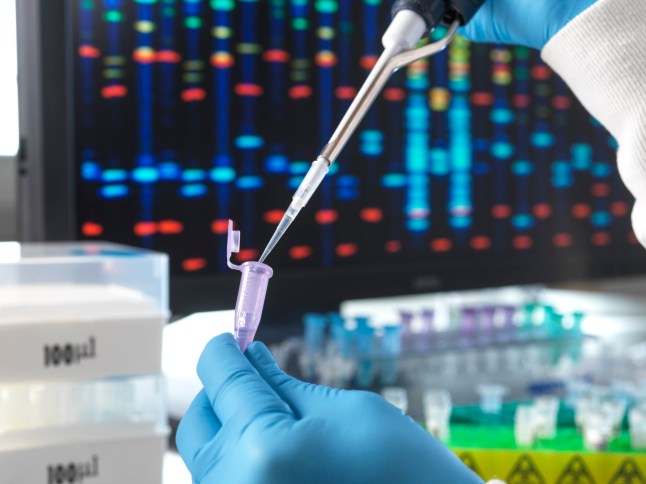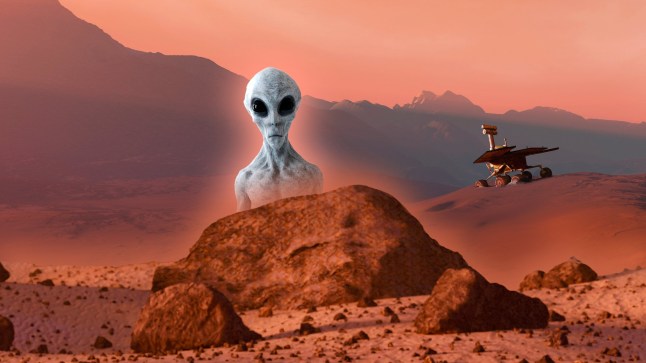
In 1924, scores of New Yorkers flooded the streets armed with telescopes to see the alien civilisation above their heads.
Mars, the red planet to our blue marble, was believed to be home to extraterrestrial life within its dusty mountains.
‘The fact of their existence is a natural conclusion from observations of their planet,’ one astronomer said at the time.
Well over a century later, it seems pretty clear that Martians aren’t moseying around our planetary neighbour.
But that doesn’t mean they never did. Nasa’s Curiosity rover has found the largest organic compounds ever seen on the planet.
The material was found inside a 3.7 billion-year-old rock in Yellowknife Bay, which may have once been a habitable freshwater lake.
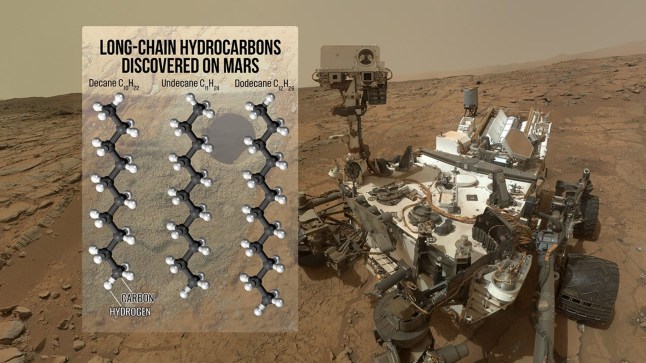
Onboard tests detected molecules suspected to be remnants of fatty acids, which are produced by living creatures to form cell membranes.
‘Our study proves that, even today, by analysing Mars samples we could detect chemical signatures of past life, if it ever existed on Mars,’ said Caroline Freissinet, the lead study author and research scientist at the French National Centre for Scientific Research.
Researchers stressed these molecules, though described as organic, could have also formed in chemical reactions that did not involve life.
They were also careful to stress they can’t say for sure that these molecules are traces of dead microbial Martians, called ‘biosignatures’.
The new findings, published Monday in the Proceedings of the National Academy of Sciences, mark the first major clue that Mars’ organic chemistry might have reached the complexity needed for life to begin.
Scientists know Mars was once a habitable place with blue seas, gushing rivers and clear skies. But no slam-dunk evidence of Martians has ever been found.
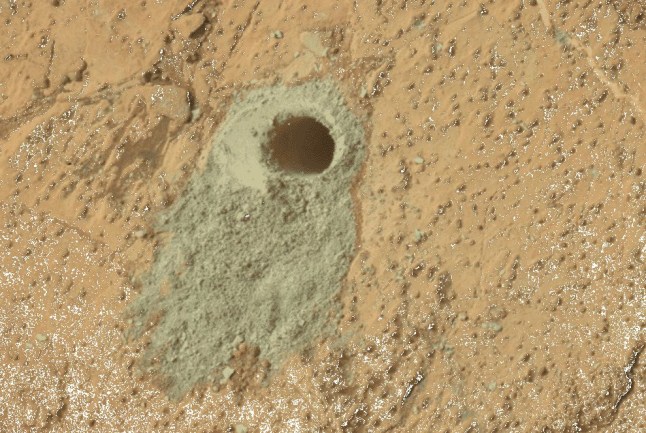
Curiosity has been exploring Mount Sharp, located within an ancient meteor impact crater called Gale, since 2012.
‘There is evidence that liquid water existed in Gale Crater for millions of years and probably much longer, which means there was enough time for life-forming chemistry to happen in these crater-lake environments on Mars,’ said Daniel Glavin, senior scientist for sample return at Nasa and a study co-author.
Trundling along in the following year, the rover drilled into a sample of mudstone from a rock nicknamed ‘Cumberland’.
Between finding the ruins of a spaceship and this rock, only one of the two might seem tantalising.
But Freissinet and her team have been seriously excited by Cumberland. They and other scientists have, among other things, identified Martian organic molecules, clay minerals that hint at water and nitrates, which on Earth are essential to the health of wildlife inside of it.
Now the team have discovered inside it three large organics – decane, undecane and dodecane – that may have once been fatty acids that converted to alkanes when heated.
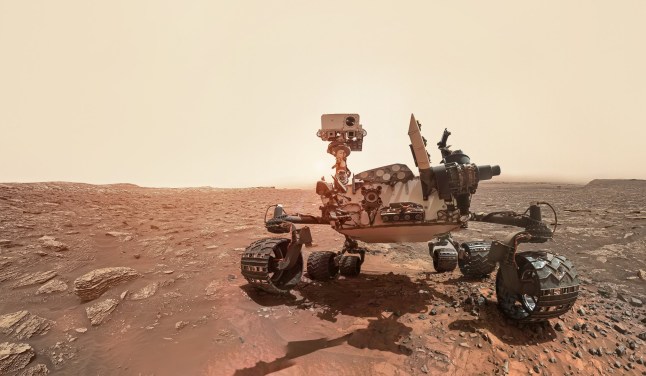
The enzymes that build fatty acids on Earth do so two carbon atoms at a time, meaning the compounds contain more even numbers of carbon than odd.
‘Cumberland is teasing us,’ Freissinet said. ‘The one in the middle with 12 carbons is more abundant than the other two.’
Curiosity rifles through rock samples by drilling them into grit, popping them in quartz cups and baking them at temperatures up to 1100°C. Any gases coughed up are identified with a high-tech tool called a gas chromatograph-mass spectrometer.
But Curiosity is no laboratory. So experts back on Earth have to run experiments under Mars-ish conditions to help make sense of what Curiosity finds.
Freissinet and Glavin’s team’s experiments suggest that the fatty acids contained in the rock are 3,700,000,000 years old – roughly when life is thought to have began on Earth.
For now, the next step is hauling all the rock samples to Earth to finally ‘settle the debate about life on Mars’, said Glavin.
‘It’s been a long journey to this point,’ he added. ‘This is really searching for a needle in a haystack.
‘There’s no question about it. We have three needles.’
Get in touch with our news team by emailing us at webnews@metro.co.uk.
For more stories like this, check our news page.


